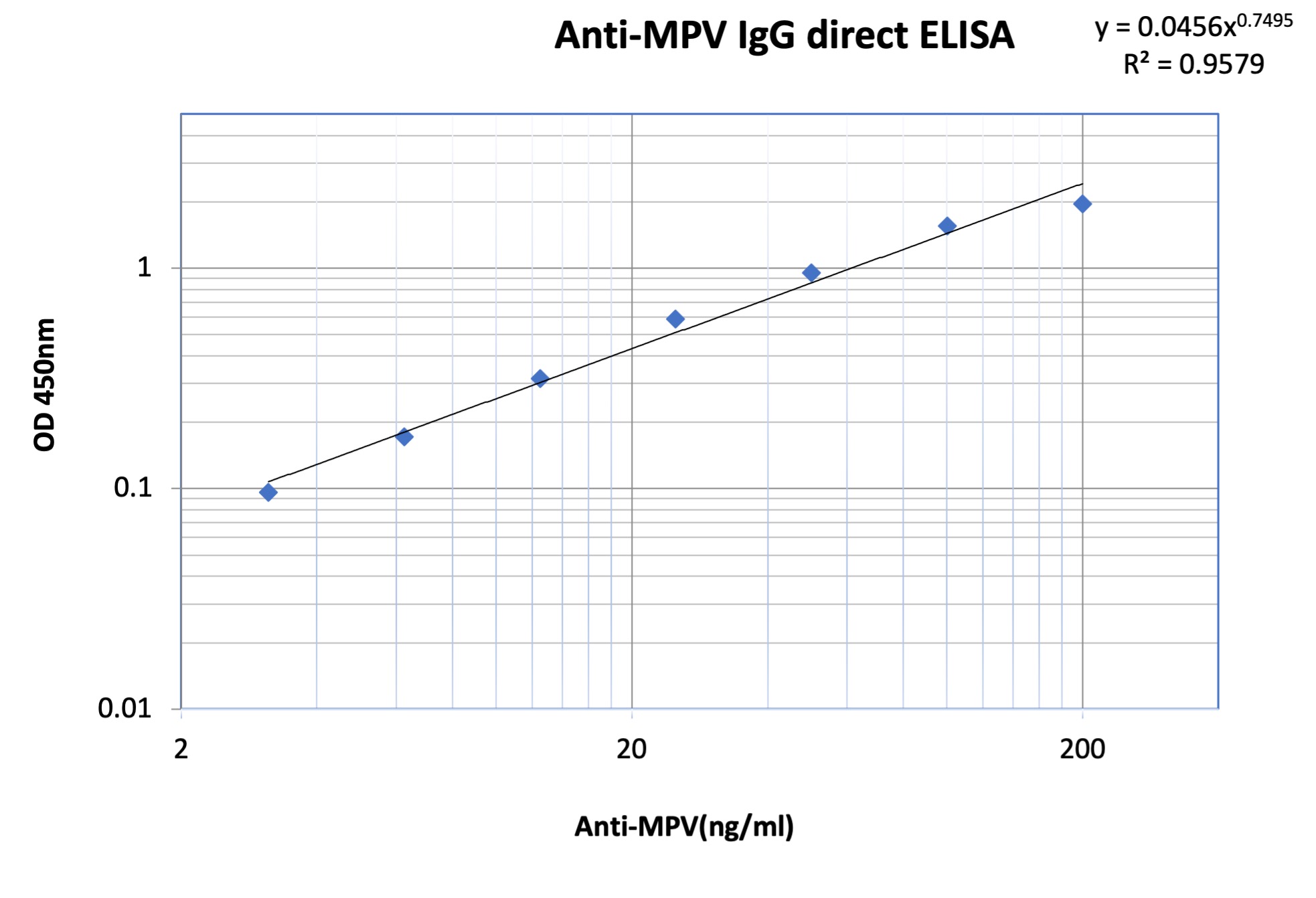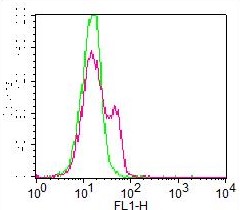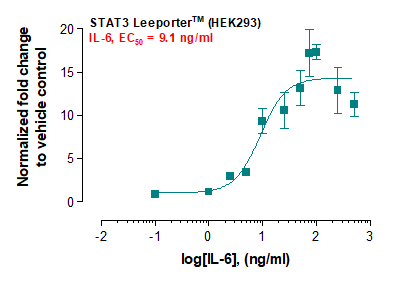Monoclonal Antibody to human TLR3 (Clone : TLR3.7)(Discontinued)

Figure-1: Flow cytometric analysis of human TLR3 on THP-1 cells by using 10 µg/ml of anti-TLR3 antibody (Clone : TLR3.7). Red represent isotype control and blue represent anti TLR3 antibody.
Roll over image to zoom in
Shipping Info:
For estimated delivery dates, please contact us at [email protected]
| Format : | Purified |
| Amount : | 500 µg |
| Isotype : | Mouse IgG1 |
| Content : | 0.5 mg, 0.2 µm filtered protein G purified antibody solution in PBS, containing 0.1% bovine serum albumin. The endotoxin concentration is < 24 EU/mg, determined with HIT302 LAL Assay. |
| Storage condition : | Product should be stored at 4 °C. Under recommended storage conditions, product is stable for one year. |
The monoclonal antibody 10-3516 recognizes the 116 kDa human Toll-like receptor 3 (TLR3, CD283). Toll-like receptors (TLRs) are highly conserved from Drosophila to humans and share structural and functional similarities. TLRs constitute of a family of pattern recognition receptors (PRRs) that mediate cellular responses to a large variety of pathogens (viruses, bacteria, and parasites) by specific recognition of so-called ‘pathogen-associated molecular patternsÂ’. Activation of TLRs, a family of at least 11 different members that function either as homo- or heterodimers, leads to activation of NFκBdependent and IFN-regulatory factor-dependent signaling pathways. TLRs have a central role in innate immunity and are also required for the development of an adaptive immune response. TLRs are expressed by various cells of the immune system, such as macrophages and dendritic cells. TLRs are class I receptors, with a single Alpha-helix that spans the cell membrane. They recognize and respond to molecules derived from bacterial, viral and fungal pathogens, such as lipopolysaccharide (LPS) from the outer membrane of Gram negative bacteria, peptidoglycan fragments from bacterial cell walls and single-stranded and double-stranded RNA from viruses. Some forms of RNA and DNA from pathogens exhibit immutable features that distinguish them from nucleic acids of higher organisms. For example, dsRNA, is a common intermediate of viral replication and a potent indicator of infection. Toll-like receptor 3 (TLR3) recognizes viral double-stranded RNA and its synthetic analog polyriboinosinic:polyribocytidylic acid (poly(I:C)). TLR3 is normally located in acidic endosomes where its luminal ectodomain (ECD) encounters dsRNA and induces type I interferon (IFN), inflammatory cytokine/chemokine production and dendritic cell (DC) maturation via the adaptor protein TICAM-1 (also called TRIF). Based on the different subcellular localization of cytosolic RNA receptors and TLR3, these receptors seem to play distinct roles in anti-viral immune responses.
F: dried sections, fixed with 4% paraformaldehyde and subsequently washed in PBS and MQ. Sections were quenched with 0.3%H2O2 in methanol and washed in PBS. Sections were permeabilized with 0.4% triton-X100 in PBS. Pretreated slides were blocked with 1% horse serum for 20 minÂ’ and incubated o/n with antibody . FC: cells were incubated with 1 µg antibody together with 10 µg human IgG for 30Â’at 4°C in PBS/0,5% BSA . FS: 7.5*104 MRC5 cells were pre-treated with 10-20 µg/ml for 1-24h at 37°C. Monoclonal antibody TLR3.7 inhibits dsRNA-induces IFN-beta production. IF: Cytospins of monocyte-derived iDCs were fixed for 30Â’ with 3% formaldehyde in PBS, permeabilized with PBS/1%BSA/0.5%saponin. After PBS wash slides were incubated for 1h at RT with 20ug/ml antibody in PBS/1%BSA . P: Formalin fixed, paraffin embedded sections were deparaffinized with xylene, followed by washes in 95% and 70% EtOH. Sections were washed with water and permeabilized with 0.4% triton-X100 in PBS. Pretreated slides were blocked with 1% horse serum for 20Â’ and incubated o/n with antibody. W: Total cellular protein was loaded on 7.5% SDS-PAGE and blotted on PDVF. Blots were incubated with 2 µg/ml antibody o/n at 4°C.
For Research Use Only. Not for use in diagnostic/therapeutics procedures.
| Subcellular location: | Endoplasmic reticulum membrane, Endosome membrane, Early endosome |
| Post transnational modification: | TLR3 signaling requires a proteolytic cleavage mediated by cathepsins CTSB and CTSH, the cleavage occurs between amino acids 252 and 346. The cleaved form of TLR3 is the predominant form found in endosomes. |
| Tissue Specificity: | Expressed at high level in placenta and pancreas. Also detected in CD11c+ immature dendritic cells. Only expressed in dendritic cells and not in other leukocytes, including monocyte precursors. TLR3 is the TLR that is expressed most strongly in the brain, especially in astrocytes, glia, and neurons. |
| BioGrid: | 112953. 32 interactions. |
|
There are currently no product reviews
|















.png)











